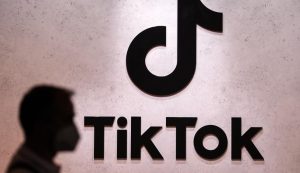Turn eCommerce Expectations into Guaranteed Sales
We all know that keeping your customers happy is the key to building loyalty and earning repeat business. If your customers aren’t satisfied with their buying experience, it won’t matter how good your marketing is, how many leads you receive, or how well your sales funnel converts new customers–they won’t come back.
And you need them to come back. In eCommerce, Between 20 and 50% of your transactions are generated by returning customers, and for most merchants, those transactions account for the lion’s share of revenue. In fact, the Pareto Principle predicts that just 20% of a given brand’s customers will account for around 80% of its revenue–in other words, your most loyal segment of customers produces the vast majority of your profits. Plus, returning customers cost nothing to acquire and take shorter journeys to conversion, meaning the margin on their purchases is higher. That’s why so many retailers invest in loyalty incentives and VIP perks designed to grow returning sales.
In eCommerce, there are lots of great tools to help merchants delight customers and win returning business. Loyalty programs, referral incentives, 3D and augmented reality product views, free shipping, and even carbon neutral ordering all play a role in nurturing conversions and enhancing brand perception. But one of the most effective, underused methods of fostering loyalty online is to offer excellent customer service.
According to HubSpot, 93% of customers are likely to make a repeat purchase with companies that offer excellent customer service. That’s a lot! And modern helpdesk apps like Gorgias and Zendesk offer many more sales-focused features to merchants than you’d probably expect.
In fact, while you might imagine that customer service is primarily a tool for facilitating returns and exchanges, today’s platforms excel at closing conversions, raising AOV, and collecting valuable customer data. Here are five critical ways that a smart customer service program can help you boost profits and loyalty online:
Orient customers at critical stages in the buying journey
According to Shopify, every time a new customer returns to your site to make a purchase, the likelihood that they’ll make a subsequent purchase increases. A first-time returning customer has a 45% chance of making a third purchase, a twice returned customer has a 56% chance of making a fourth purchase, and so on.
Merchants have an incredible incentive to maximize the number of customers that make it through the sales funnel beyond just the prospect of the immediate sale. One effective way to do this is to figure out where a significant proportion of site users are getting stuck, and offer a hand.
You can use the “behavior flow” tab in Google Analytics (or the equivalent in your preferred reporting dash) to assess common pathways to purchase on your store, and isolate the steps where you see the most attrition. From there, you can use your helpdesk app to set up scripted prompts that drive sales at these critical junctures.
For instance, if you find that a significant number of prospects bounce once they reach your collections page, it may not be set up for optimal browsing. A simple “can I help you find something” prompt will engage many users who would otherwise leave without making a purchase.
Resolve complaints before they become reviews
Social proof is one of the most powerful tools in sales because shoppers tend to trust neutral user opinions much more than they trust marketing copy. For the same reason, negative reviews can kill conversions.
Your best defense against negative reviews and their erosive effects is to offer your customers responsive, helpful customer service before they take to the comments section. That sounds like a complex psychological undertaking, but all you really need to do is message consistently and appropriately: Include a comment card with your packaging that encourages dissatisfied customers to engage with your friendly customer service team. Add an opening gambit to the helpdesk icon on your homepage so that your customers register it every time they visit your website. Include a customer care module in your campaign emails and automation programs.
By weaving your customer service program into your communications materials, you’ll create an available, private conduit where you can resolve complaints and improve customer satisfaction without exposing your business to bad word of mouth.
Help customers surface relevant products quickly
Your customers won’t buy what they can’t find, and they won’t go looking for solutions they don’t know exist. A well-designed website acts like a roadmap connecting your customers to their desires, but if you’ve got hundreds of SKUs or you sell a particularly high-touch good like jewelry, some users are bound to get lost or require more information than you can fit into a product description.
Setting up a customer service chat is a great way to point lost site users in the right direction and answer questions in real-time that might otherwise be stumbling blocks on their journey to purchase. High-end furniture maker Rove Concepts uses a dedicated customer chat on-site where brand reps can share furniture schematics, talk fabrics, and provide cleaning insights to prospective customers. The website stays looking like a showroom, while customer service answers sales-focused questions from self-qualified leads.
If you come from the world of traditional retail, it may seem strange to reassign responsibilities you associate with your sales team to customer service. But eCommerce is about convenience and expedience, and helpdesks offer the most immediate, richest way for site users to reach a brand representative. The more you can empower your customer service team to act as an extension of sales, the more sales they’ll make.
Create more upsell opportunities
Savvy personalization of the user experience can raise revenue by 19%, and boost profits by 15%. That’s why the top eCommerce companies invest so heavily in technologies that create smart product recommendations and tailored landing pages.
But your customer service team can make the same recommendations as the smartest API, and provide richer information to your customers to boot. Plus, they spend a lot of time assisting warm leads. Therefore, when you empower customer care to suggest logical pairings for your high-velocity products or to explain how customers can save money with a simple subscription, you’re actually creating a high-touch sales channel for prospects already in the decision phase of their buying journeys.
If you’ve ever interacted with a post-purchase upsell page, you have a sense of how powerful it can be to suggest bundles, subscriptions, and product pairings to shoppers in the decision phase. But eCommerce expert Joel York puts that power in predictable formulaic terms, showing that raising AOV by 15% through upselling can accelerate the time to profit for young brands by almost 2X.
Build an FAQ that generates sales
Brands spend a lot of money learning about their customers–what they like, what they dislike, and how they prefer to shop. But with an integrated customer service solution, you can start collecting that data without spending another penny or resorting to gray-area tactics.
Many modern helpdesks include a CRM, or a customer relationship management platform, that records demographic customer information and logs all of a customer’s interactions with a brand. This is incredibly helpful information to have at the ready when a returning customer has a question, but it’s even more valuable in aggregate.
For example, a customer service CRM can help you to surface the most prevalent issues your customers experience with your products and your user experience. Instead of continuing to spend resources addressing individual queries related to these issues, you can address them definitively in your FAQ.
Your FAQ will help more customers answer their own pain-point-related questions while freeing up your customer service team to focus on sales and handle more nuanced requests. Building a robust FAQ will also act as an SEO play that creates more organic sales over time. The more customer-relevant info you include in your FAQ, the more likely it is that prospects will find your website through organic search. The more leads that land on your website via organic search, the higher your site will rank on Google. The higher your site ranks on Google, the more organic leads will visit your website… You see where this is going, right?
Two helpdesks we like
At my company, P3, we most often recommend Gorgias and Zendesk. Gorgias is a modern helpdesk solution engineered to aid in upselling, and their app is priced to be friendly to small and mid-sized merchants. Gorgias offers an intuitive CRM for agents, the ability to create automated scripts and trees, and an extremely robust integration for Shopify merchants.
Zendesk is the incumbent that many larger companies are already comfortable using. As you’d expect from an incumbent, the Zendesk platform is powerful and extremely customizable, giving merchants the power to finely tailor their customer service experience no matter which eCommerce platform they’re using. But the price reflects this additional flexibility.
Ultimately, you’ll base your choice on your specific business requirements. What’s most important is how you leverage that choice to build profits.
Digital & Social Articles on Business 2 Community(21)





